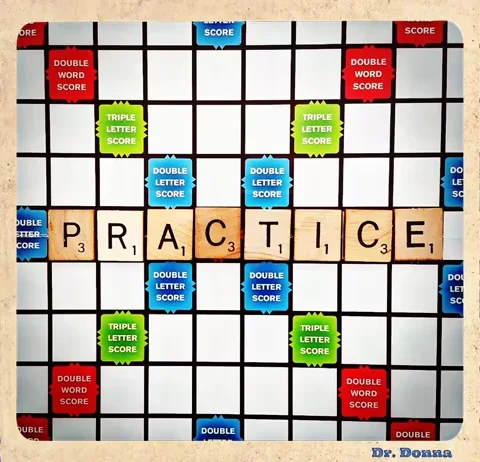
This logo isn't an ad or affiliate link. It's an organization that shares in our mission, and empowered the authors to share their insights in Byte form.
Rumie vets Bytes for compliance with our
Standards.
The organization is responsible for the completeness and reliability of the content.
Learn more
about how Rumie works with partners.
You liked a movie and want to see it again with a friend.
How do you tell your friend how good the movie is?

You add degree adverbs to your opinion about the movie:
"The movie is very good. I highly recommend we see it together."
It helps convince your friend to go with you.
What Are Degree Adverbs?
Degree adverbs make the meaning of the adjectives, adverbs, or verbs stronger or weaker.
They answer the questions how much? or how little?
For example, "quite angry" is stronger than "angry". Here, "quite" adds intensity to "angry".
Read the short story below about two friends spending a day together and see how degree adverbs are used in the story.
 Photo by Vince Fleming on Unsplash
Photo by Vince Fleming on UnsplashViya and Ruth are very good friends. Last Saturday they went swimming in a lake. Ruth found the water just right for swimming, but Viya found the water too cold and came out. After swimming they went to eat ice cream. They were too full after eating the ice cream. They returned home in the evening just in time to watch their favorite show.
 Notice how the words "very", "just", and "too" add more meaning and intensity to the sentences they are used in. For example, Viya and Ruth aren't just good friends, they're closer best friends.
Notice how the words "very", "just", and "too" add more meaning and intensity to the sentences they are used in. For example, Viya and Ruth aren't just good friends, they're closer best friends.
Why Use Degree Adverbs?

In everyday conversations, degree adverbs help you express your excitement/emotions more strongly.

Example:
Anne: Congratulations on your engagement! We are very excited for both of you.
Betty: Thank you. I'm so glad you could come to the engagement party.
Anne: We really enjoyed the party.

Notice how adding the words very, so, and really help express feelings more clearly and strongly. They help you modify (add more information to) your adverbs, verbs, or adjectives.
Let's look at some common degree adverbs with examples of how you can use them in your daily conversations.
Common Degree Adverbs with Examples

Very
Very means "to a greater degree" and it makes the adjective/adverb/verb stronger.
Example: She runs very fast. (very modifies the adverb fast)
Very explains that the girl runs faster than average runners.
Quite
Quite can have different meanings: "a little/moderately", or "completely/totally".
Example: The art exhibition is quite interesting. (quite modifies the adjective interesting)
Quite shows that the exhibition is a little/moderately interesting.
Example: We were quite satisfied with the restaurant's service.
Quite here means we were completely/totally satisfied with the service we received from the restaurant.
Just
Just can have a few different meanings: very close in time or distance, exactly, or precisely.
Example: He was just leaving the office. (just modifies the verb leaving)
Just means he was at the door or stepping out of the office.
Example: The cake was just right!
The word just here means that the case had the perfect taste.
Almost
Almost also means "very close, nearly everything".
Example: We're almost done with our work here. (almost modifies the verb done)
Almost shows that we're very close to finishing our work.
Quiz
Select the correct meaning of the sentence: "It was quite amusing to teach new tricks to the kids."
In this sentence "quite" adds more meaning to the adverb "amusing" and together they mean "it was fun to teach the kids."
Did you know?
You can use quite to show surprise.
Example: The rain came quite quickly. (adverb quite modifies the adverb quickly)
Quite here means we're surprised at how fast the rain came.
More Degree Adverbs with Examples

Too
Too means "more than needed".
Example: The coffee is too hot for me to drink. (too modifies the adverb hot)
Too tells us that if I drink the coffee, it might burn my tongue.
Enough
Enough means "the right amount".
Example: The water is warm enough for swimming. (enough modifies the adverb warm)
Enough shows that the water temperature is good for swimming — it's not too cold, not too hot.
Really
Really means "genuinely" or "truly".
Example:
The party was really fun. (really modifies the adjective fun)
Really explains that it was an exciting party and everyone enjoyed it.
Extremely
Extremely also adds more emphasis to adverbs, verbs, and adjectives — it's stronger than "very".
Example:
The water was extremely cold, so we couldn't swim in the lake.
Extremely adds more emphasis to cold and explains why it wasn't okay to swim in the lake.
Did you know?
Too has another meaning: "also".
Example: I like reading, too!
Too here means that someone told me they like reading, and I'm sharing that I also like reading.
Rules for Using Degree Adverbs with Examples
Usually, you add the degree adverb before the adjective, adverb, or verb it gives more information about.
Examples:
The water (subject) + was (verb) + extremely (degree adverb) + cold (adjective).
He (subject) + walks (verb) + very (degree adverb) + slowly (adverb).
We (subject) + just (degree adverb) left (verb) the office.
BUT: If the sentence has a helping verb (to be/have) before the main verb, it's not so simple!

If the degree adverb gives more information about another adverb, put the degree adverb after the main verb and before the other adverb.
Examples:
The water (subject) + was (helping verb) + moving (main verb) extremely (degree adverb) + fast (other adverb).
He (subject) + was (helping verb) + walking (main verb) + very (degree adverb) + slowly (other adverb).
If the degree adverb gives more information about the main verb, put the degree adverb between the helping verb and the main verb.
Examples:
She (subject) + has (helping verb) + just (degree adverb) + left (main verb) her job.
I (subject) + was (subject) + almost (degree adverb) + finished (main verb) the test when the time limit passed.
Quiz
Which of these sentences have the correct word order?
"Really" modifies the adjective "delicious", and the sentence has no helping verb, so "really" goes before the adjective. "Just" modifies "leaving", and the sentence has a helping verb, so "just" goes between then helping verb and the main verb.
Did you know?
You can't say something is "very delicious". This is because food is either delicious or not delicious. For adjectives like this, use "really".
Exceptions to the Rules

Enough: "the right amount"
When "enough" means "the right amount", then it goes after the adverb or adjective it modifies.
The adverb enough can be used in three ways:
At the end of a sentence
Example: Is the coffee hot enough? No, it isn't hot enough.
Here, the person uses enough to ask if the coffee's temperature is sufficient to drink. The answer: It needs to be hotter.
Before to + infinitive
Example: He didn't work hard enough to pass the exam.
Here, enough emphasizes that he failed his exam because his work wasn't sufficient.
Followed by "for someone" or "for something"
Example: This house is big enough for our family.
Enough here means that this house is sufficient for our family's needs.
Too: "also"
When "too" means "also", then it goes at the end of the phrase to add more emphasis/meaning to the sentence.
Example: We'd like to go to the movie too.
Too emphasizes that we should also be invited to the movie.
Let's Practice

Look at the degree adverbs in the chart above, then read the short paragraph below. Fill in the correct degree adverbs to make it more interesting.
Last week, I hadan interesting day at work. Three strangers entered the store and pretended to be ( 1 ) friendly. While two of them distracted my attention, the third one picked up some items from the store. Then ( 2 ) suddenly, they left the store. When I realized what had happened, I was ( 3 ) distressed and called the police
Quiz
For the above paragraph, choose the right degree adverbs for each number.
"Very" adds emphasis to the actions of the strangers when they entered the store. "Quite suddenly" shows that it all happened without a warning. "Extremely" adds a strong emphasis to how troubled the person was after this incident.
Take Action

This Byte has been authored by
Monisha Lal
Volunteer Learning Developer